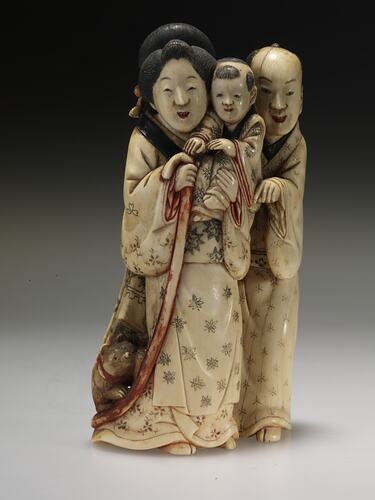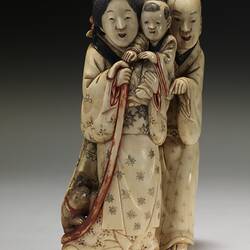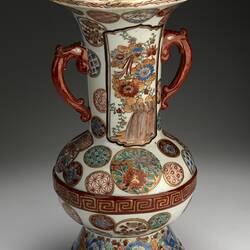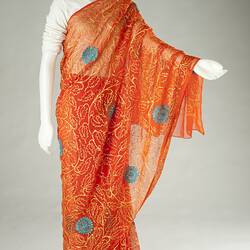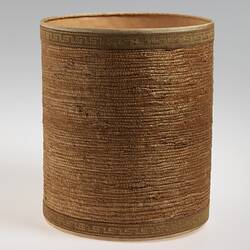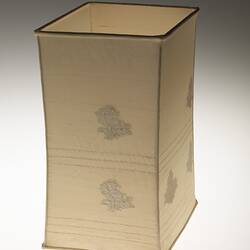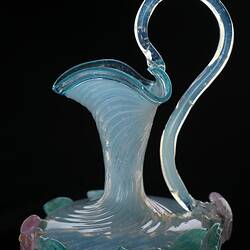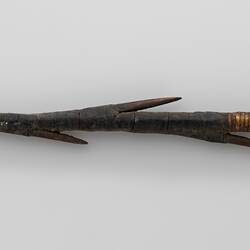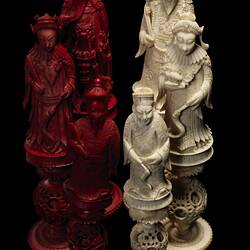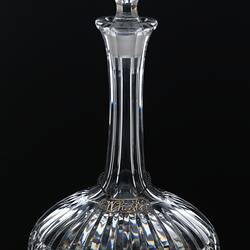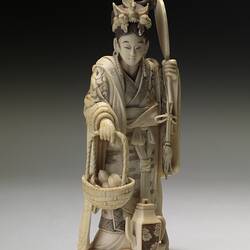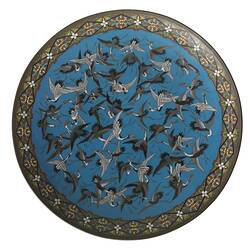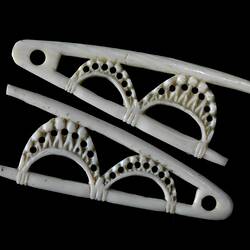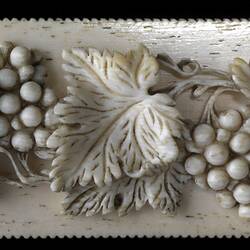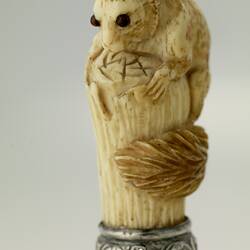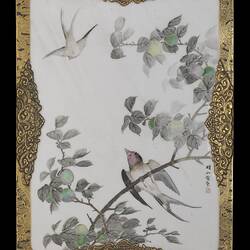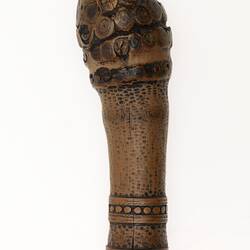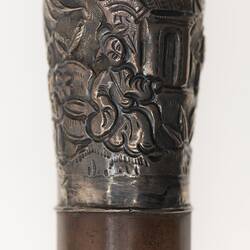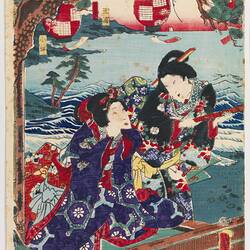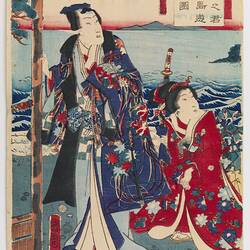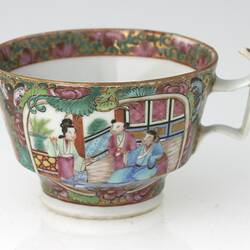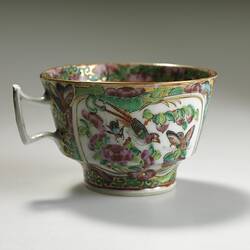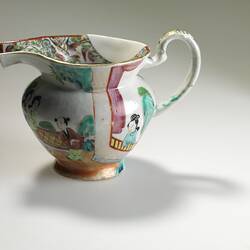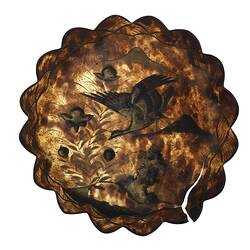The John Twycross Melbourne International Exhibitions Collection comprises approximately 200 objects bought by wealthy wool merchant John Twycross at the 1880 Melbourne International Exhibition and 1888 Melbourne International Centennial Exhibition. A remarkable snapshot of late 19th century taste and style, the collection includes examples of decorative, functional, and novelty objects and works of art exhibited in the Austro-Hungarian, British, German, Italian, Japanese, British Indian, and Minor Courts.
John 'Top Hat' Twycross immigrated to Australia from Wokingham, Berkshire, England in December 1853. In the 1870s he built 'Emmarine', a substantial mansion - with an art wing - on Glenhuntly Road in Elsternwick. His increasing interest in Melbourne's art scene saw him elected to the council of the Art Union of Victoria in 1875. It is probably from this time onwards that he began to acquire paintings and drawings by local artists, as well as to build up a collection of decorative arts, fine furniture and statutory.
It is easy to imagine John, his wife Charlotte (nee Burrell of the McRae homestead) and his children perusing the various courts and stands at the 1880 Melbourne International Exhibition and carefully selecting beautiful objects to decorate their home and enrich their art collection.
In May 1883, he sold a 'splendid collection' of oil paintings and watercolour drawings, including works by renowned Australian colonial artists Louis Buvelot and Eugene von Guerard, through the Melbourne auction firm Gemmell, Tuckett and Co 'in consequence of his contemplated departure for Europe'.
Further sales of his collection in 1884 and again in 1888 suggest that his extensive collecting, including 'some valuable works, purchased from the French and German Courts at the Last Melbourne International Exhibition' of 1880, as well as chinaware and bronzes purchased from the more recent 1888-89 Centennial Exhibition, exceeded his ability to store and display his collection, encouraging a frequent pattern of buying and selling.
Shortly after John Twycross' death in 1889, much of his collection was sold at two auctions held by Fraser & Co in October. It was advertised with some confidence that his collection of art works was 'well known by all connoisseurs and art patrons', with every lot being guaranteed to have been selected by Twycross, 'a well-known expert'.
The family has copies of the catalogues from these auctions which show that some of the material in the collection being offered to the museum was put up for sale, but did not sell. The objects that did not sell, and a number that were not put up for auction, have remained in the Twycross family since; they have been curated by the women of the family for four generations. The collection has been donated to Museum Victoria by John Twycross' great grandson, Dr Will Twycross. The Twycross family has donated the collection to Museum Victoria as the custodian of the Royal Exhibition Building (REB), the site of Victoria's two World Fairs.
The John Twycross Melbourne International Exhibitions Collection is not merely a wonderful collection of decorative arts, it is also significant because it operates as a primary source to the 1880 Melbourne International Exhibition. The contemporary viewer is offered a rare insight into Melbourne's first World Fair. We are shown the exhibits and given a vivid indication of fashionable Australian and European 19th century taste.
Related Material
You can read more about John Twycross the collector, his collection and Melbourne's International Exhibitions, and four generations of Twycross family curators in the Museums Victoria publication Visions of Colonial Grandeur.
References
Argus newspaper, assorted dates.
More Information
-
Keywords
Ceramics, Chinese Art, Cloisonné Metalwork, Decorative Arts, Earthenware, Exhibitions: Melbourne International, 1880-1881, Glassware, Greek Mythology, Horology, Italian Art, Ivory, Japanese Art, Lacquerware, Porcelain, Prints, Royal Exhibition Building, Tortoiseshell, Weapons
-
Localities
-
Authors
-
Article types
